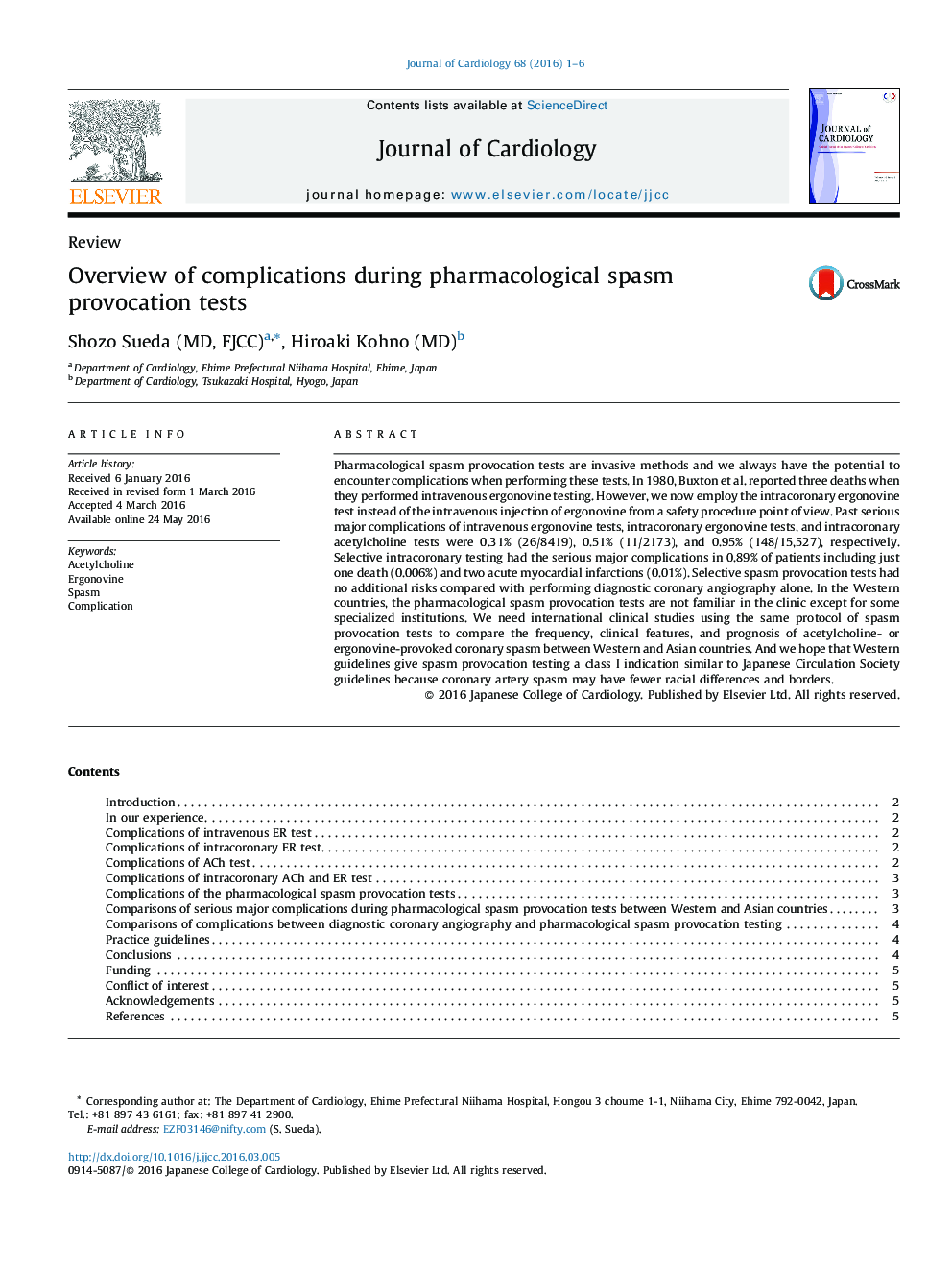| Article ID | Journal | Published Year | Pages | File Type |
|---|---|---|---|---|
| 2962748 | Journal of Cardiology | 2016 | 6 Pages |
Pharmacological spasm provocation tests are invasive methods and we always have the potential to encounter complications when performing these tests. In 1980, Buxton et al. reported three deaths when they performed intravenous ergonovine testing. However, we now employ the intracoronary ergonovine test instead of the intravenous injection of ergonovine from a safety procedure point of view. Past serious major complications of intravenous ergonovine tests, intracoronary ergonovine tests, and intracoronary acetylcholine tests were 0.31% (26/8419), 0.51% (11/2173), and 0.95% (148/15,527), respectively. Selective intracoronary testing had the serious major complications in 0.89% of patients including just one death (0.006%) and two acute myocardial infarctions (0.01%). Selective spasm provocation tests had no additional risks compared with performing diagnostic coronary angiography alone. In the Western countries, the pharmacological spasm provocation tests are not familiar in the clinic except for some specialized institutions. We need international clinical studies using the same protocol of spasm provocation tests to compare the frequency, clinical features, and prognosis of acetylcholine- or ergonovine-provoked coronary spasm between Western and Asian countries. And we hope that Western guidelines give spasm provocation testing a class I indication similar to Japanese Circulation Society guidelines because coronary artery spasm may have fewer racial differences and borders.
